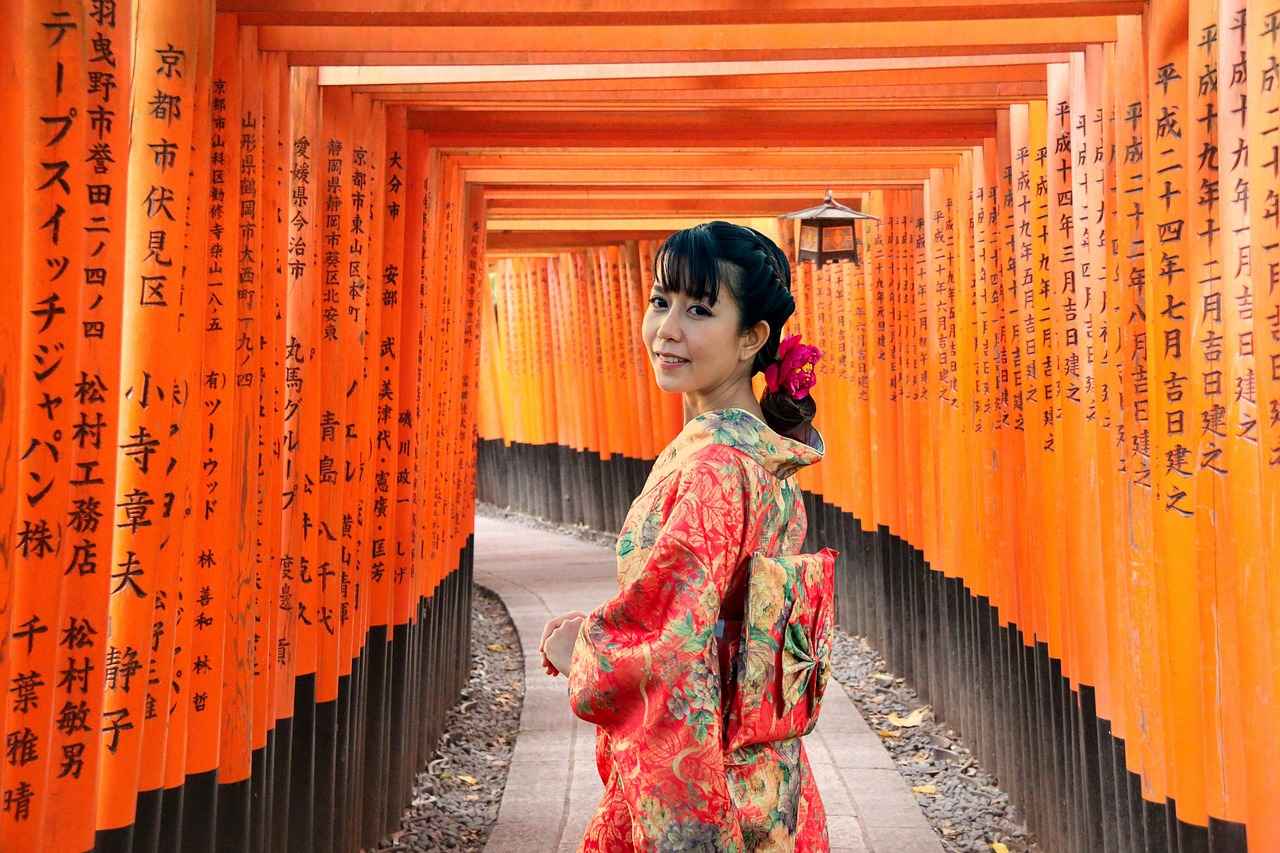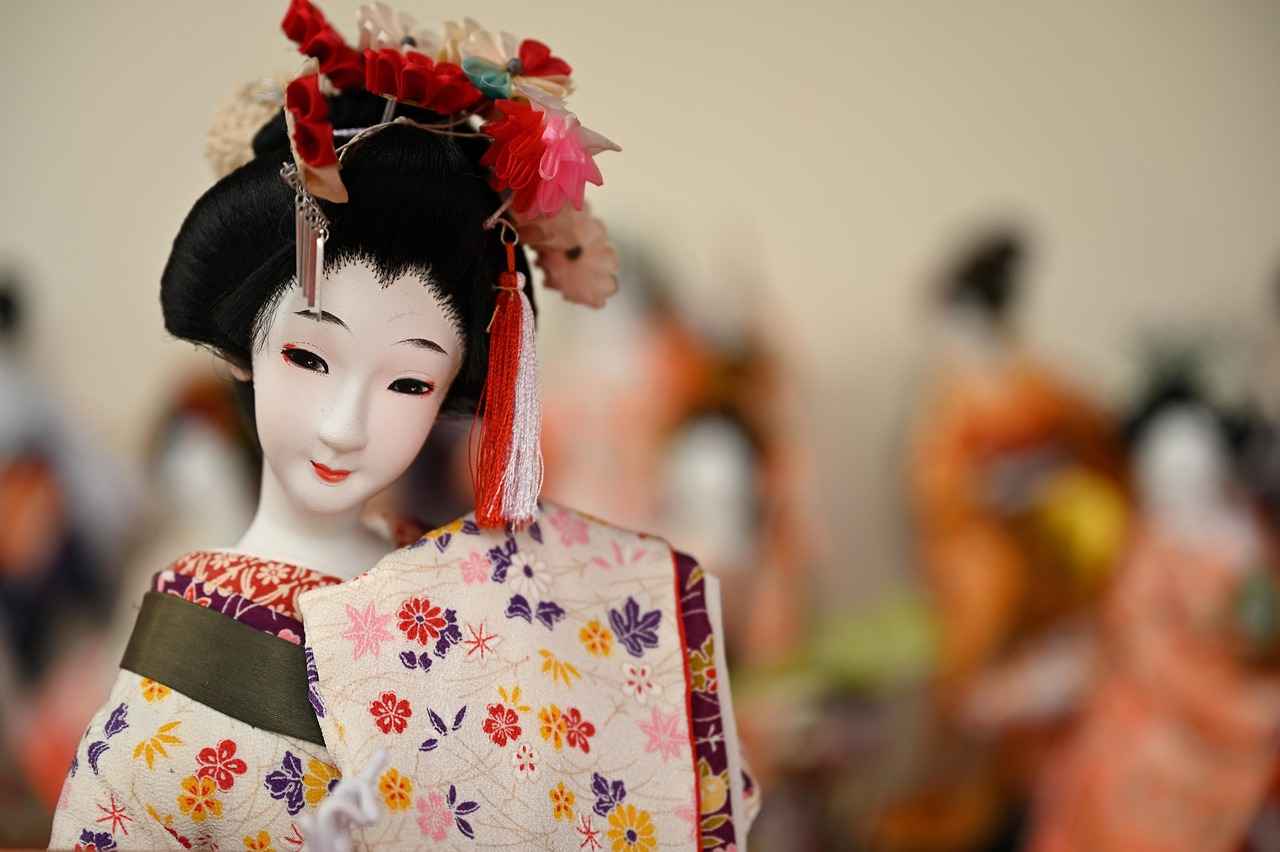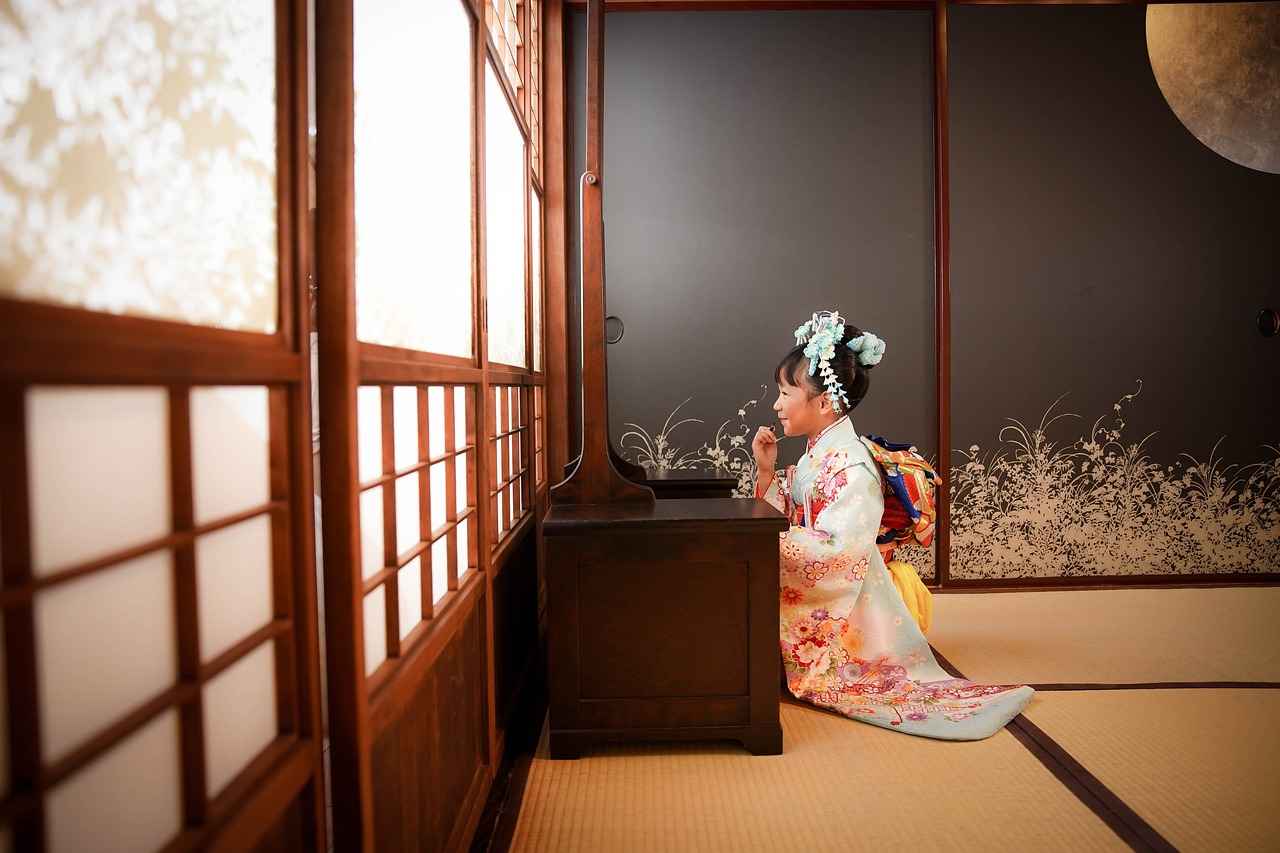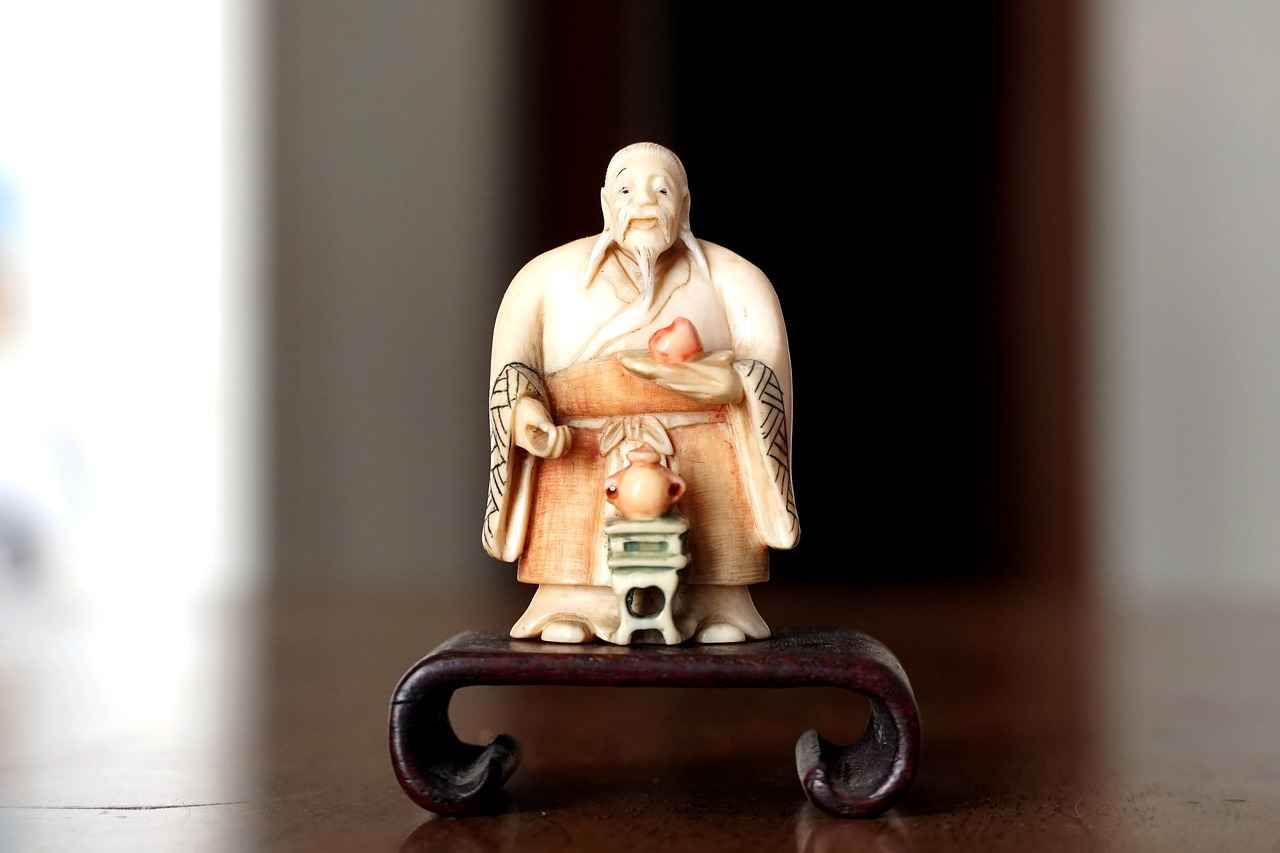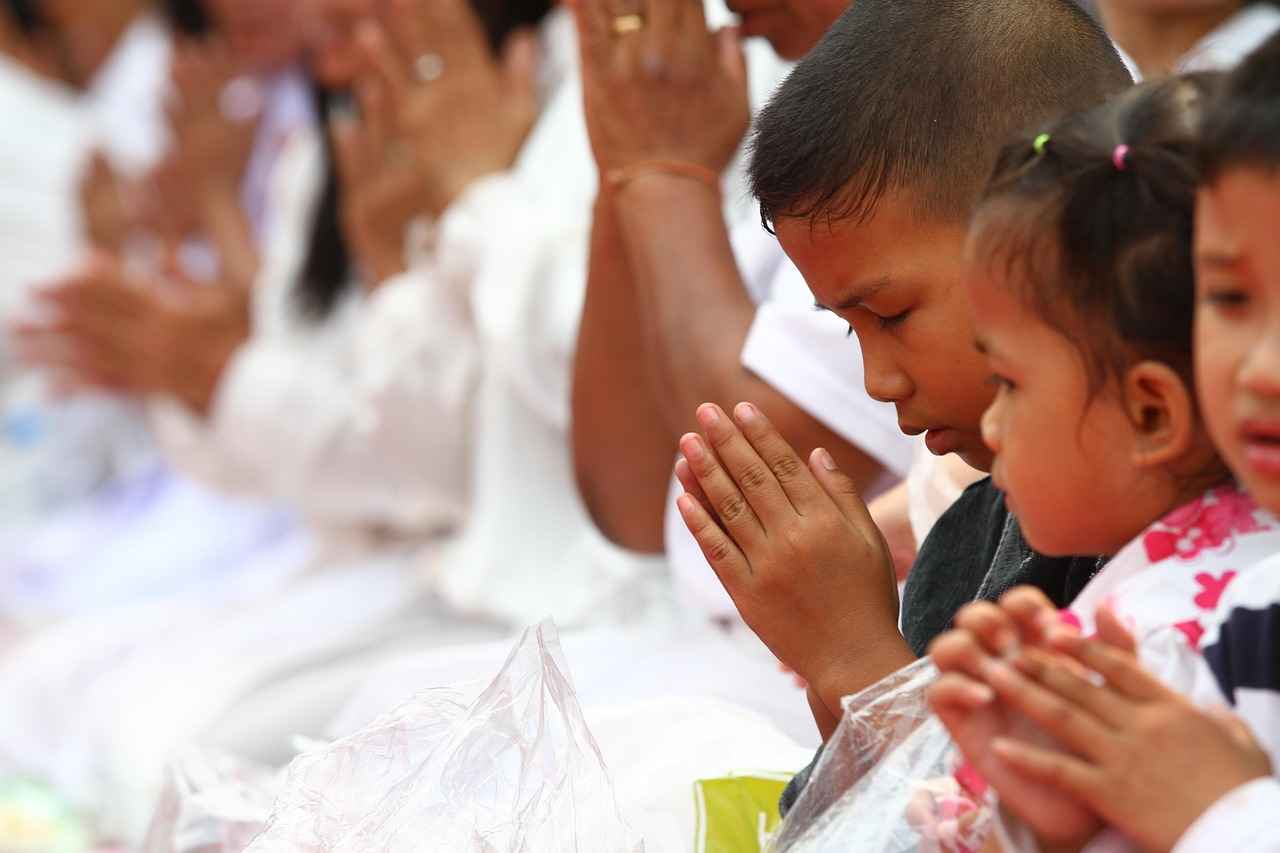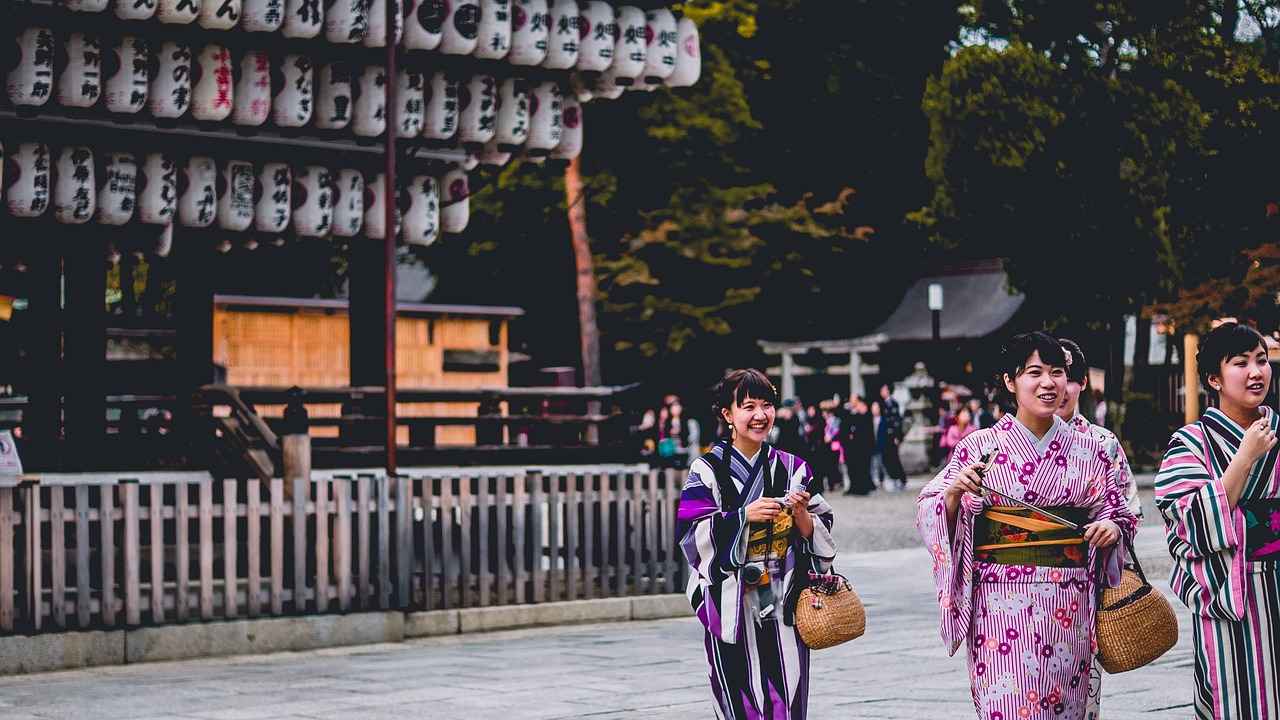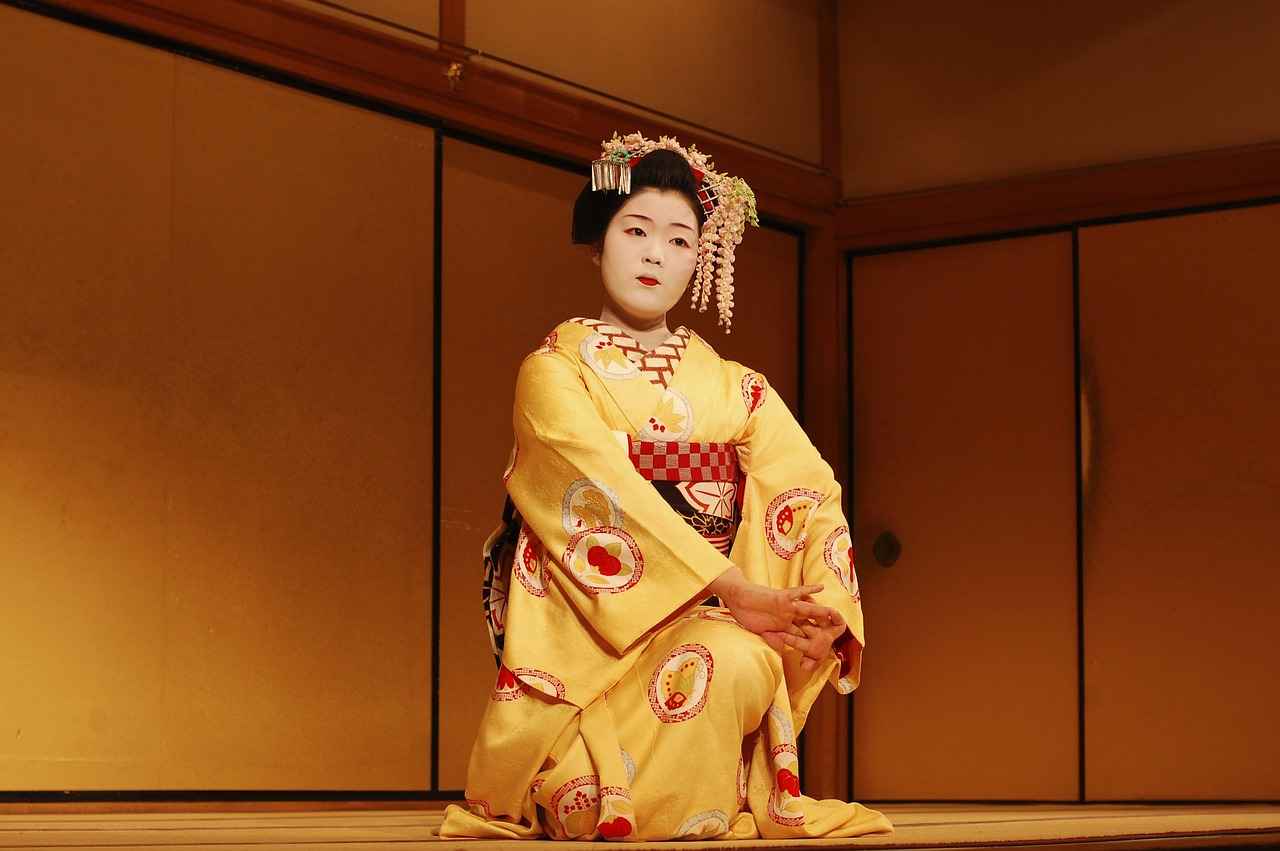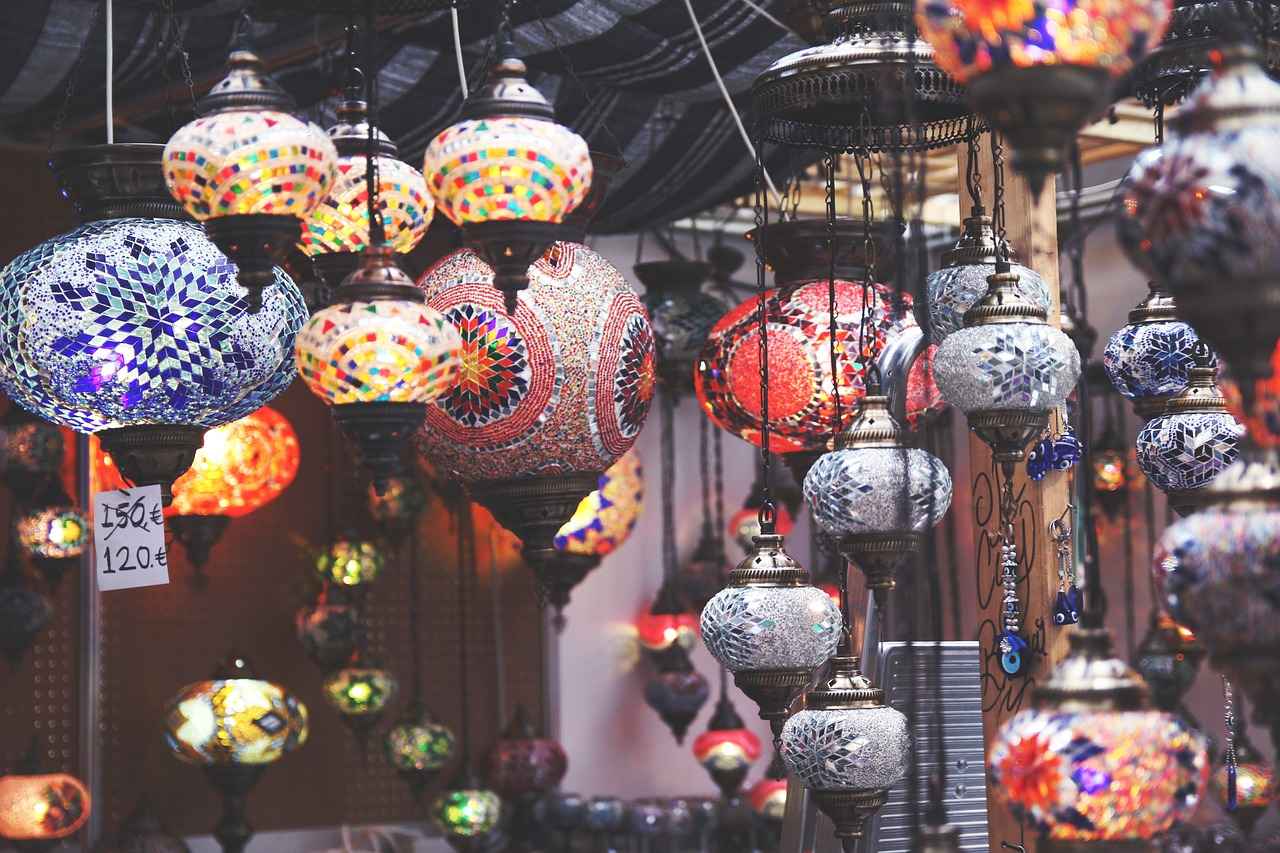This article delves into the distinctions between traditional and modern kimonos, emphasizing their historical significance, design variations, and cultural relevance in contemporary society.
Understanding the Traditional Kimono
The traditional kimono is a garment deeply embedded in Japanese culture, known for its elaborate designs, luxurious fabrics, and specific wearing styles. Historically, these garments were not just clothing; they represented the wearer’s social status, age, and even marital status.
The Evolution of Modern Kimono
In contrast, modern kimonos have adapted to fit contemporary fashion trends. They often feature simplified designs and are made from a variety of materials, making them suitable for various occasions, from casual outings to formal events.
Historical Significance of Traditional Kimonos
Traditional kimonos are rich in history, often worn during significant events such as weddings, festivals, and other rites of passage. Each design often carries symbolic meanings, showcasing Japan’s rich cultural heritage.
Materials Used in Traditional Kimonos
Crafted from high-quality materials like silk and cotton, traditional kimonos are adorned with intricate patterns and embroidery that can tell a story or symbolize good fortune, enhancing their cultural value.
Styles and Types of Traditional Kimonos
- Furisode: A formal kimono with long sleeves, typically worn by young, unmarried women.
- Tomesode: A formal kimono with shorter sleeves, often worn by married women.
Contemporary Styles in Modern Kimonos
Modern kimonos often blend traditional elements with contemporary aesthetics, incorporating innovative cuts, colors, and patterns that resonate with a broader audience, particularly younger generations.
Key Differences Between Traditional and Modern Kimonos
Understanding the key differences helps to appreciate the garment’s evolution. Traditional kimonos are primarily reserved for formal occasions, while modern kimonos are designed for versatility and can be worn in casual settings.
Fashion Trends Influencing Modern Kimonos
Current fashion trends have significantly influenced modern kimono designs, introducing elements from Western fashion and resulting in unique hybrid styles that appeal to today’s fashion enthusiasts.
The Cultural Impact of Kimonos Today
Kimonos continue to play a vital role in Japanese culture, bridging the gap between tradition and modernity. They serve as a symbol of national identity and heritage, making them relevant in global fashion.
Kimono in Popular Culture
The representation of kimonos in film, television, and fashion has contributed to their global recognition, inspiring designers and fashion enthusiasts around the world.
Preserving Kimono Traditions
Efforts to preserve traditional kimono craftsmanship are crucial for maintaining cultural heritage, with artisans and designers working tirelessly to keep these timeless garments relevant in modern fashion.
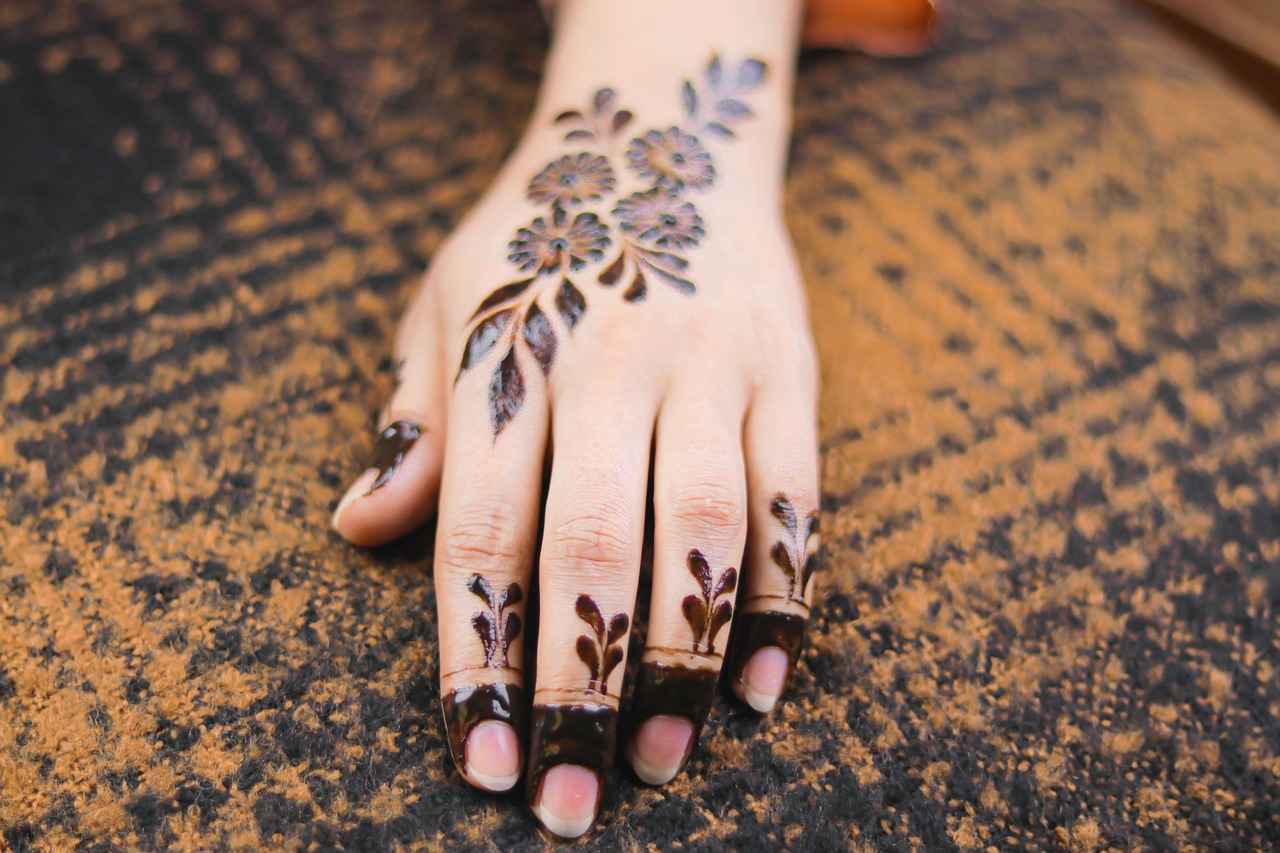
Understanding the Traditional Kimono
The traditional kimono is more than just a garment; it is a symbol of Japan’s rich cultural heritage. This exquisite attire has been a part of Japanese life for centuries, reflecting the nation’s history, artistry, and social norms. Traditionally made from luxurious fabrics such as silk and cotton, kimonos are known for their intricate designs and vibrant colors that often carry significant meanings.
One of the most striking features of the traditional kimono is its elaborate designs. Each kimono is often adorned with detailed patterns that tell a story or symbolize various aspects of Japanese culture, such as nature, seasons, and mythology. For instance, cherry blossoms may represent the transient beauty of life, while cranes symbolize longevity and good fortune.
The way a kimono is worn is also steeped in tradition. The garment is typically wrapped around the body and secured with an obi, a wide belt that adds both beauty and structure. Different styles of kimonos, such as the furisode for young unmarried women and the tomesode for married women, signify the wearer’s age and marital status, showcasing the deep-rooted customs associated with this attire.
Moreover, traditional kimonos are often reserved for formal occasions, such as weddings, tea ceremonies, and festivals. Wearing a kimono on these special occasions is not just about fashion; it is a way to honor tradition and express cultural identity.
In conclusion, the traditional kimono is a timeless garment that encapsulates the essence of Japanese culture. Its elaborate designs, rich fabrics, and specific wearing styles reflect a deep historical significance that continues to resonate within contemporary society.
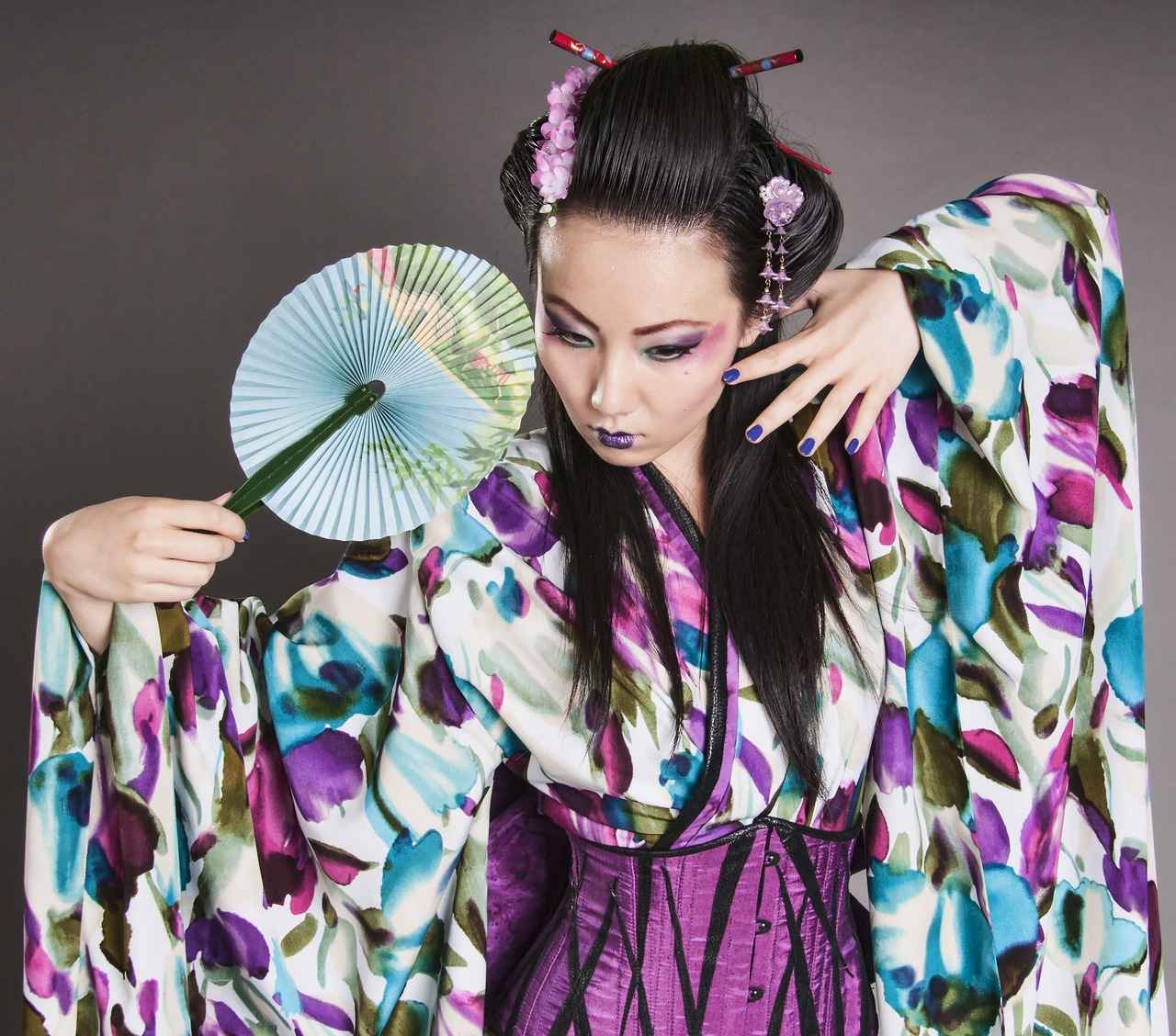
The Evolution of Modern Kimono
The evolution of the kimono is a fascinating journey that reflects the dynamic interplay between tradition and modernity. Modern kimonos have undergone significant transformations, adapting to contemporary fashion trends while retaining elements of their rich heritage. This article delves into the various aspects of modern kimonos, highlighting their design innovations, versatility, and cultural significance in today’s society.
One of the most notable changes in modern kimonos is their design simplification. Unlike their traditional counterparts, which often feature intricate patterns and elaborate fabrics, contemporary kimonos tend to embrace minimalism. This shift towards simpler designs allows for easier integration into everyday wardrobes, making them suitable for a variety of occasions, from casual outings to formal events.
- Versatile Usage: Modern kimonos can be styled in numerous ways, often layered over other clothing items such as jeans or dresses, making them a fashionable choice for diverse settings.
- Material Innovation: While traditional kimonos are typically made from silk or cotton, modern versions may incorporate a range of materials, including blends that enhance comfort and ease of care.
- Color and Pattern Trends: Contemporary kimonos often feature bold colors and contemporary patterns, appealing to younger generations and aligning with current fashion trends.
Furthermore, the cultural relevance of modern kimonos cannot be overlooked. As they gain popularity outside Japan, these garments serve as a bridge between cultures, promoting appreciation for Japanese traditions while allowing for personal expression. Fashion designers worldwide are increasingly drawing inspiration from kimono aesthetics, resulting in unique hybrid styles that resonate globally.
In conclusion, the evolution of modern kimonos showcases a remarkable blend of tradition and innovation. By embracing contemporary fashion trends and enhancing their versatility, modern kimonos have become accessible and appealing to a broader audience, ensuring their place in both historical and contemporary contexts.
Historical Significance of Traditional Kimonos
The traditional kimono is not merely a garment; it is a profound symbol of Japanese culture, embodying centuries of history, artistry, and identity. Each kimono is a canvas that tells a story, often linked to significant events in a person’s life, such as weddings, coming-of-age ceremonies, and seasonal festivals. The intricate designs and colors of kimonos are carefully chosen to reflect the occasion and the wearer’s status, making them a vital part of Japan’s cultural heritage.
Traditionally, kimonos were made from luxurious materials like silk and cotton, adorned with elaborate patterns and motifs that convey meaning. For instance, the crane symbolizes longevity and good fortune, while the cherry blossom represents the transient beauty of life. These symbols are not just decorative; they connect the wearer to their ancestry and cultural narratives.
Moreover, the style and type of kimono can signify various aspects of life. The furisode, characterized by its long sleeves, is typically worn by young, unmarried women during formal events, while the tomesode, with shorter sleeves, is reserved for married women. Such distinctions highlight the importance of age and marital status in Japanese society.
In contemporary Japan, traditional kimonos remain relevant, often worn during festivals and ceremonies, serving as a bridge between the past and the present. The resurgence of interest in these garments has led to a revival of traditional craftsmanship, ensuring that the art of kimono-making continues to thrive. This enduring legacy not only preserves cultural practices but also fosters a sense of national pride among the Japanese people.
In conclusion, the historical significance of traditional kimonos extends beyond their aesthetic appeal. They encapsulate a rich tapestry of cultural values, social customs, and artistic expression, making them an indispensable part of Japan’s identity.
Materials Used in Traditional Kimonos
Traditional kimonos are not just garments; they are a reflection of Japan’s rich cultural heritage. Crafted with care and precision, these beautiful pieces often utilize luxurious fabrics such as silk and cotton. The choice of material plays a significant role in the overall aesthetic and feel of the kimono, as well as its intended use.
Silk, known for its soft texture and natural sheen, is frequently used in formal kimonos. This fabric is lightweight yet durable, making it ideal for garments worn during special occasions like weddings or traditional festivals. On the other hand, cotton kimonos are often favored for everyday wear due to their breathability and ease of maintenance, allowing for comfort in casual settings.
One of the most captivating aspects of traditional kimonos is their intricate designs. These garments are often adorned with elaborate patterns and embroidery, each telling a unique story or symbolizing good fortune. For example, motifs such as cranes represent longevity, while cherry blossoms signify the beauty of life. This artistry not only enhances the kimono’s visual appeal but also connects the wearer to Japan’s rich narrative tradition.
Moreover, traditional kimonos vary in style and purpose. Certain types, like the furisode, are designed for young, unmarried women and are characterized by long sleeves and vibrant colors. In contrast, the tomesode, which features shorter sleeves and more subdued colors, is typically worn by married women during formal events.
In conclusion, the materials and designs of traditional kimonos are deeply intertwined with Japan’s cultural identity. By understanding these elements, we can appreciate the craftsmanship and significance behind each garment, ensuring that this beautiful tradition continues to thrive in modern times.
Styles and Types of Traditional Kimonos
The traditional kimono is a remarkable garment that reflects the rich tapestry of Japanese culture. Various styles exist, each serving distinct purposes and symbolizing different aspects of the wearer’s life, such as age and marital status. Understanding these styles is essential for appreciating their cultural significance.
- Furisode: This style is characterized by its long, flowing sleeves and is typically worn by young unmarried women during formal events such as weddings and coming-of-age ceremonies. The vibrant colors and intricate designs symbolize youth and vitality.
- Tomesode: In contrast to the furisode, the tomesode is a more subdued kimono worn by married women at formal occasions. It features shorter sleeves and often showcases elegant patterns at the hem, signifying maturity and sophistication.
- Yukata: A casual summer kimono made from lightweight cotton, the yukata is often worn at festivals and during hot weather. It is known for its vibrant colors and simple designs, making it a favorite for both men and women.
- Hōmongi: This style is a formal kimono that can be worn by both married and unmarried women. It is often adorned with beautiful patterns that flow seamlessly across the garment, symbolizing grace and elegance.
- Shioze: A type of kimono made from silk, the shioze is known for its luxurious feel and is often reserved for special occasions. Its glossy appearance and intricate designs make it a popular choice for formal events.
Each of these styles not only showcases the artistry involved in kimono making but also serves as a visual representation of the wearer’s social standing and personal milestones. As society evolves, so do the interpretations and uses of these traditional garments, blending the old with the new.
In conclusion, the diverse styles of traditional kimonos, such as the furisode and tomesode, illustrate the depth of Japanese culture and the significance of clothing in expressing identity and heritage. Understanding these variations enriches our appreciation of this iconic garment.
Contemporary Styles in Modern Kimonos
have become a fascinating blend of tradition and innovation, appealing to a diverse range of fashion enthusiasts. Today’s kimonos are no longer confined to formal events; they have transformed into versatile garments that can be worn in various settings, from casual outings to high-fashion runways.
One of the most notable aspects of modern kimonos is their innovative cuts. Designers are experimenting with asymmetrical hems, cropped lengths, and oversized silhouettes. These styles not only enhance comfort but also allow for greater freedom of movement, making them ideal for everyday wear. Additionally, the use of lightweight fabrics such as rayon and jersey has contributed to this trend, making kimonos more accessible and practical for daily use.
In terms of colors and patterns, contemporary kimonos often showcase bold and vibrant hues, departing from the traditional muted tones. Floral prints, geometric designs, and even abstract art are frequently seen, appealing to a younger audience that seeks individuality in their fashion choices. This shift reflects a broader trend in the fashion industry, where personalization and self-expression are paramount.
Moreover, modern kimonos often incorporate Western fashion elements, such as pairing with jeans or layering over dresses, creating a hybrid style that resonates with global audiences. This fusion not only broadens the appeal of kimonos but also encourages cultural exchange and appreciation.
In conclusion, the evolution of contemporary styles in modern kimonos highlights the garment’s adaptability and relevance in today’s fashion landscape. By blending traditional craftsmanship with modern aesthetics, kimonos continue to serve as a symbol of cultural heritage while also embracing the dynamic nature of contemporary fashion.

Key Differences Between Traditional and Modern Kimonos
Understanding the distinctions between traditional and modern kimonos is essential to appreciate their evolution and significance in both historical and contemporary contexts. This exploration reveals how these garments have adapted over time while maintaining their cultural essence.
Traditional Kimono: A Symbol of Heritage
The traditional kimono is a garment deeply embedded in Japanese culture. It is characterized by its intricate designs, luxurious fabrics such as silk, and specific styles of wearing that reflect centuries of history. Traditional kimonos are often associated with significant life events, such as weddings and festivals, showcasing the wearer’s social status and cultural identity.
Modern Kimono: A Fusion of Tradition and Trend
In contrast, modern kimonos have evolved to meet contemporary fashion demands. These garments often feature simplified designs, vibrant colors, and versatile styles that can be worn casually or on special occasions. This shift has made kimonos more accessible to a broader audience, allowing them to be integrated into everyday wardrobes.
| Aspect | Traditional Kimono | Modern Kimono |
|---|---|---|
| Design | Intricate, elaborate patterns | Simplified, contemporary styles |
| Material | High-quality silk and cotton | Variety of fabrics including blends |
| Occasions | Formal events and ceremonies | Casual wear and fashion statements |
| Significance | Represents cultural heritage | Reflects modern fashion trends |
Conclusion: Embracing the Evolution
In summary, the key differences between traditional and modern kimonos highlight the garment’s rich history and its adaptability in today’s fashion landscape. By recognizing these distinctions, we can celebrate the kimono not only as a symbol of Japanese culture but also as a versatile piece in global fashion.
Functionality and Versatility
are key characteristics that distinguish modern kimonos from their traditional counterparts. In today’s fashion landscape, modern kimonos have transcended their historical significance to become versatile garments suitable for a variety of occasions. Unlike traditional kimonos, which are often reserved for formal events and cultural ceremonies, modern iterations are designed with everyday wear in mind.
Modern kimonos often feature lightweight fabrics and simplified designs, making them comfortable and easy to wear. They can be paired with casual outfits, such as jeans and t-shirts, or dressed up with elegant accessories for a night out. This adaptability allows individuals to incorporate kimonos into their wardrobes in a way that reflects their personal style.
Additionally, the contemporary kimono has embraced a range of colors and patterns that appeal to a broader audience. From bold prints to minimalist styles, modern kimonos cater to diverse fashion preferences. This evolution is a response to the changing dynamics of fashion, where the lines between casual and formal wear are increasingly blurred.
| Feature | Traditional Kimono | Modern Kimono |
|---|---|---|
| Occasions | Formal events, cultural ceremonies | Casual settings, fashion statements |
| Design | Elaborate, intricate | Simplified, versatile |
| Fabric | Silk, cotton | Lightweight, varied materials |
| Style | Fixed styles | Innovative cuts, diverse patterns |
In conclusion, the of modern kimonos have redefined their role in contemporary fashion. By merging traditional elements with modern aesthetics, these garments have become a staple in many wardrobes, highlighting the dynamic nature of cultural attire in today’s society.
Fashion Trends Influencing Modern Kimonos
The intersection of traditional Japanese culture and contemporary fashion has given rise to a fascinating evolution in kimono designs. Modern kimonos have begun to reflect the dynamic influences of global fashion trends, resulting in a unique blend that appeals to younger generations.
One of the most significant influences on modern kimono design is the integration of Western fashion elements. Designers are now experimenting with fabric choices, cuts, and styles that diverge from traditional norms. For instance, the use of lighter and more breathable materials allows for greater comfort and wearability, making kimonos suitable for casual outings, parties, and even streetwear.
Moreover, the adoption of bold colors and patterns has become a hallmark of modern kimonos. While traditional kimonos often feature subtle hues and intricate motifs, contemporary designs embrace vibrant colors and graphic prints that resonate with the tastes of younger consumers. This shift not only makes kimonos more visually appealing but also aligns them with current fashion trends.
Another aspect of this evolution is the versatility of modern kimonos. Unlike their traditional counterparts, which are typically reserved for formal events, modern kimonos can be styled in various ways. They can be paired with jeans, shorts, or layered over dresses, allowing for a myriad of looks that suit different occasions. This adaptability has significantly broadened the appeal of kimonos beyond cultural boundaries.
Additionally, the rise of sustainable fashion has influenced modern kimono designs. Many contemporary designers are focusing on eco-friendly materials and ethical production methods, catering to a growing audience that values sustainability in fashion.
In conclusion, the evolution of modern kimonos showcases a fascinating blend of tradition and innovation. By incorporating elements from Western fashion and adapting to contemporary trends, modern kimonos not only preserve cultural significance but also attract a new generation of wearers, ensuring that this iconic garment remains relevant in today’s fashion landscape.

The Cultural Impact of Kimonos Today
Kimonos are more than just garments; they are a vital thread in the fabric of Japanese culture, embodying a rich history that spans centuries. Today, kimonos serve as a bridge between the past and the present, symbolizing national identity and heritage while adapting to the modern world.
In contemporary society, the cultural impact of kimonos is profound. They are often seen at ceremonial events, such as weddings and festivals, where their traditional significance is honored. However, they have also found a place in everyday fashion, with many people incorporating modern designs into their wardrobes.
| Aspect | Traditional Kimono | Modern Kimono |
|---|---|---|
| Design | Elaborate, often hand-stitched | Simplified, trendy cuts |
| Occasions | Formal events | Casual wear, fashion statements |
| Materials | Silk, cotton | Varied, including synthetic fabrics |
The global recognition of kimonos has also been fueled by their representation in popular culture, from films to fashion shows. This visibility has inspired a new generation of designers and fashion enthusiasts to explore the beauty and versatility of kimonos.
Moreover, efforts to preserve traditional craftsmanship are ongoing, as artisans strive to maintain the intricate techniques that define kimonos. Workshops and classes are being held to teach the art of kimono-making, ensuring that these timeless garments remain relevant in the fashion landscape.
In conclusion, kimonos continue to play a crucial role in connecting generations, allowing people to celebrate their cultural heritage while embracing modernity. As they evolve, kimonos not only retain their traditional essence but also adapt to the ever-changing world of fashion.
Kimono in Popular Culture
The kimono has transcended its traditional roots to become a significant symbol in popular culture, particularly in film and fashion. This iconic garment, once primarily associated with Japan, has captured the imagination of designers and fashion enthusiasts around the globe. The portrayal of kimonos in various media has not only elevated their status but has also sparked a renewed interest in their historical and cultural significance.
In film, kimonos are often used to convey elegance, tradition, and a rich cultural heritage. Movies such as “Memoirs of a Geisha” and “Lost in Translation” showcase the beauty and intricacy of kimonos, highlighting their role in Japanese society. These films have introduced audiences worldwide to the artistry involved in kimono design, from the choice of fabric to the intricate patterns that often symbolize various aspects of Japanese culture.
Moreover, the fashion industry has embraced kimonos, integrating them into contemporary wardrobes. Designers like Gucci and Chanel have drawn inspiration from traditional kimono aesthetics, creating modern interpretations that appeal to a diverse audience. The infusion of kimonos in streetwear and high fashion has made them accessible to younger generations, who appreciate their versatility and unique style.
As a result, kimonos have become a global fashion statement, often seen on runways and in casual settings alike. This widespread recognition has led to a greater appreciation for Japanese craftsmanship and cultural heritage, as more people seek to understand the stories behind these garments.
In conclusion, the representation of kimonos in popular culture has significantly contributed to their global recognition and appreciation. By inspiring designers and fashion enthusiasts worldwide, kimonos have successfully bridged the gap between tradition and modernity, ensuring their relevance in today’s fashion landscape.
Preserving Kimono Traditions
is a vital endeavor that ensures the survival of a significant aspect of Japanese cultural heritage. As modernity continues to influence fashion trends, the traditional kimono faces challenges in maintaining its relevance. However, dedicated artisans and designers are committed to keeping this exquisite garment alive.
The traditional kimono is not merely a piece of clothing; it embodies centuries of history, artistry, and cultural significance. Each kimono is meticulously crafted using time-honored techniques, often passed down through generations. The intricate patterns and vibrant colors are not just aesthetic choices; they often carry deep meanings and stories, reflecting the rich tapestry of Japanese culture.
To preserve these traditions, many artisans engage in workshops and training programs aimed at teaching younger generations the skills required to create kimonos. These initiatives are crucial in fostering a new appreciation for the craftsmanship involved. Additionally, collaborations between traditional artisans and contemporary designers have led to innovative designs that appeal to modern tastes while respecting the integrity of traditional methods.
- Workshops: Hands-on experiences that teach the art of kimono making.
- Collaborations: Partnerships between traditional artisans and modern designers.
- Awareness Campaigns: Efforts to educate the public about the cultural significance of kimonos.
Furthermore, the rise of social media and online platforms has provided a new avenue for promoting kimono culture. Fashion influencers and enthusiasts showcase kimonos in contemporary settings, challenging the notion that they are only suitable for formal occasions. This visibility helps to bridge the gap between tradition and modernity, encouraging a broader audience to appreciate and wear kimonos.
In conclusion, the efforts to preserve traditional kimono craftsmanship are essential not only for maintaining cultural heritage but also for inspiring future generations. By blending traditional techniques with modern aesthetics, artisans and designers are ensuring that kimonos remain a relevant and cherished part of Japanese culture.
Frequently Asked Questions
- What is the main difference between traditional and modern kimonos?
The primary difference lies in their design and purpose. Traditional kimonos are often elaborate, made from luxurious fabrics, and reserved for formal occasions, while modern kimonos are simplified, versatile, and suitable for casual wear.
- Are traditional kimonos still worn today?
Absolutely! Traditional kimonos are still worn during special events, festivals, and ceremonies, showcasing cultural heritage and personal significance.
- What materials are commonly used in traditional kimonos?
Traditional kimonos are primarily crafted from silk and cotton, featuring intricate patterns and embroidery that often symbolize good fortune or tell a story.
- How have modern kimonos evolved?
Modern kimonos have embraced contemporary fashion trends, incorporating innovative cuts, colors, and materials, making them more accessible and appealing to a younger audience.
- Can modern kimonos be worn for formal occasions?
While modern kimonos are generally designed for casual settings, certain styles can be dressed up for formal events, especially when paired with the right accessories.
- What role do kimonos play in Japanese culture today?
Kimonos serve as a bridge between tradition and modernity, symbolizing national identity and cultural heritage, while also being embraced in popular culture and fashion.
